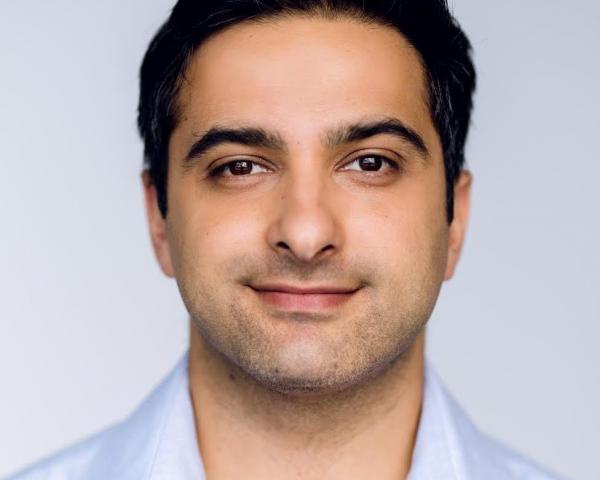Six months ago, Visa acquired Plaid for a cool $5.5 billion, instantly making the fintech company a legend among technology startups – and its founders, investors and early employees very rich.
While the money is fun to consider, it’s not my key takeaway about Plaid, whose software provides the plumbing that lets startups connect to users' bank accounts and has been employed by peer-to-peer payment app Venmo, mobile investing app Robinhood and many others.
As the CTO of a startup – one developing a technology platform for insurance carriers – I’m finding the real topic of conversation among my peers, as well as among my company’s investors, partners and prospects, is Plaid’s technology approach and its ramifications.
Plaid’s decision to focus on application programming interface (API) development vs. application development is a natural starting point for such a discussion. (The main point being that Plaid didn't set out to build all the financial apps itself; instead, it provided a key interface that others, like Venmo and Robinhood, could exploit.) But there’s more to the story. And while it has already become fashionable to describe certain companies as “the Plaid of (fill in the industry),” I don’t think Plaid will be remembered as the face that launched a thousand API ships.
Not to say that the “API-ification” of the enterprise isn’t upon us. We’re seeing it in insurance and more broadly across financial services, as more processes within and across companies plug into each other via these software interfaces. But that trend started before, and is bigger than, Plaid. Conversely, Plaid’s significance extends beyond its APIs.
So what then can Plaid teach us? What can startups, and the technologists helping build them, learn from this early 2020 success story and carry forward into the young decade?
Here are four key takeaways:
1. Empower Builders
Any time a company develops a technology that makes it possible for others to do something they couldn’t do before, that company has the makings of a hit. Many companies succumb to the temptation of trying to own too much of that innovation’s value rather than putting some of that value creation into the hands of others.
Consider Google Maps. Prior to Google Maps, it wasn’t easy for a company to build a dynamic map into its customer experiences. Yet with the Google release, retailers could put all their locations into their web experience so consumers could find them without having to go to a specialized third party service. Now dynamic maps are an integral part of an array of experiences from retail and restaurants to real estate and travel.
If Google Maps had insisted on being the destination of all things maps, i.e., “Find My Retailer,” “Find My ATM,” “Find My Restaurant,” etc., and owning the entire value proposition, the proliferation of map-enhanced experiences across the internet would not have been as quick or as pervasive.
Even a company of Google’s size recognized that that approach would have put the burden of application-layer innovation on one company, one set of developers and one team of product managers. Instead, Google famously developed dynamic maps to be an embeddable component that can fit into any other application, enabling a variety of developers to innovate for their particular markets and end-users.
That’s something Plaid got right. In developing its APIs, Plaid unlocked banking data that had never been available and usable before, but the company was smart enough to keep the focus there and let others – Venmo, for instance – innovate at the application layer. Plaid's approach brings so many more companies into the innovation mix, which in turn spurs more A/B testing, ultimately yielding more robust and varied applications – the true benefit of best of breed.
2. Love Your Hacks
Plaid did a lot of things that business school won't teach you. One of them was embracing the hack. Experience has shown that many of the most successful tech companies have used hacks to get their businesses off the ground and deliver their first positive results. Airbnb and Uber come immediately to mind, and so does Plaid.
This is important, because banks were never in the business of exposing their data in a clean way – they didn’t have nice open APIs with clean documentation. That meant that Plaid had to crack the code on its own, figuring it out for itself every step of the way. How do we get access to Bank of America data? to Chase? to the next big bank?....
The moral of the story is they did it. Sure, initially they did it with workarounds and solutions that were laughed at on forums and dismissed as insecure. But they stuck with it and built big enough engineering and data teams to make the company, its approach and its solutions sustainable over time.
But first came the hack. Before becoming sustainable, before scalability even enters the equation, Plaid was getting its hands dirty showing the value of its work, no matter how unsustainable the approach. In this regard, I see Plaid as embodying Paul Graham’s famous admonition to startups: “Do things that don’t scale.” I would just add: “until they do.”
3. Trust the Size of Your Market (and the Defensibility of Your Solution)
Technologists and entrepreneurs have to develop thick skins. We hear “no” more than “yes,” and often find ourselves answering the same questions: What is the size of your market? How are you going to monetize your innovation? How defensible is your solution?
Here, I have to tip my hat to Plaid. As a trailblazer, the company had to argue for a big market that didn’t exist yet, because no one else was monetizing access to financial data – and the generation of apps that would use that data so successfully had yet to be created.
Of course, Plaid was right. Other companies would use its APIs and multiply their value many times over. But before Plaid was right, it believed. The size of its conviction ultimately enabled it to create and fuel a multibillion-dollar market. And while it believed, it minded its knitting, focusing intently on innovating and letting great software speak for itself.
Did that answer investors’ initial questions about defensibility? At first, probably not, but as the number of successful hacks mounted, and as it became clear that the problem it was trying to solve was sufficiently complex and the competitive landscape it inhabited sparsely populated, the company earned enough breathing room to deliver each successive, successful result. By 2018, Visa and Mastercard were in on the company’s $250 million raise, and the rest is history.
See also: Insurance Innovation — Alive and Kicking
Getting there took some swagger, perhaps even a little arrogance, that Plaid could solve something no one else had dared attempt. That attitude may have been its best line of defense.
4. Guillotine Your Platform!
As I mentioned, the temptation to try to do too much, to own all the value and innovation at every layer of a solution, can be fatal, and is something Plaid brilliantly avoided. Plaid will be remembered for focusing on APIs and powerful administrative functionality, leaving the user interface (UI) and user experience (UX) layers for others to perfect and deploy.
In this case, Plaid serves as a powerful example for the many “platform” developers across the startup landscape, mine included. Platform developers want to solve it all, but Plaid is helping us not to. They deliberately chose not to provide the full vertical experience of their service, leaving it up to developers outside their company to figure things out for themselves and provide their customers their own distinct experiences.
This “headless” platform model is quickly gaining traction among startups and other solution providers, as well as among big companies hoping to accelerate or complete their digital transformations. These companies don’t want their tech providers to own any portion of the customer’s journey and experience; they just want the value, and they want it expressed natively within their own digital footprint.
That shift, and tech startups’ ability to deliver on it, may be Plaid’s most lasting legacy.






